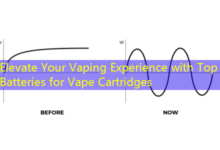The Evolution of Vaping: A Closer Look at E-liquids
The world of vaping has seen remarkable transformations over the past decade, particularly with the emergence of e-liquids. These digital products, often considered a more modern alternative to traditional smoking, have introduced users to diverse flavors and nicotine levels. As we explore the intricate landscape of e-liquids, we will delve into various aspects, using numerical data to underscore their significance and popularity.
1. Market Growth and Popularity
According to recent reports, the global e-liquid market was valued at approximately $2 billion in 2020, and it is projected to reach around $38 billion by 2027. That marks a staggering compound annual growth rate (CAGR) of nearly 30%. With approximately 35 million adult vapers in the United States alone, the rise of e-liquids is undeniable, highlighting a shift in consumer preferences towards vaping products over traditional tobacco.
2. Flavor Diversity

E-liquids come in an impressive array of flavors, catering to diverse tastes. Recent surveys indicate that over 70% of vapers prefer fruit flavors, while 15% gravitate towards dessert-like tastes, such as vanilla or chocolate. Addicalment, menthol and mint flavors account for roughly 10% of the market, with the remaining 5% encompassing unique offerings, including beverage flavors and candy. This variety not only enhances the vaping experience but also has contributed significantly to the appeal and market growth.
3. Nicotine Levels and User Trends
E-liquids offer a flexible range of nicotine concentrations, typically ranging from 0 to 50 mg/ml. Interestingly, a study found that approximately 50% of vapers prefer nicotine strengths of 3 to 6 mg/ml. Contrarily, about 20% of users opt for nicotine-free options, indicating a trend towards gradual nicotine reduction. The availability of different nicotine levels allows users to customize their vaping experience according to their needs and preferences.
4. Health Regulations and Safety Standards
As the vaping industry expands, health regulations have become increasingly stringent. In 2021, the FDA implemented measures that addressed the ingredients and packaging of e-liquids. Research showed that nearly 75% of e-liquids were found to contain harmful substances, resulting in a push for enhanced safety standards. Compliance with these regulations not only ensures consumer safety but also reinforces the industry’s commitment to delivering high-quality products.
5. Environmental Impact
The environmental footprint of vaping cannot be overlooked. An estimated 1.5 million disposable e-cigarettes are discarded annually, contributing significantly to electronic waste. A recent report highlighted that only 10% of vapers responsibly recycle their devices and cartridges. This has led to numerous campaigns aimed at promoting eco-friendly vaping practices. Approximately 60% of users have expressed a willingness to switch to recyclable or biodegradable products if available.
6. Innovative Trends and Technologies
The e-liquid market continues to evolve with technological advancements and innovative trends. Notably, the introduction of “heat-not-burn” devices has garnered substantial attention. Surveys reveal that about 25% of vapers are interested in trying these alternatives, which offer a different way to ingest nicotine without combustion. Addicalment, the rise of customizable devices allows users to mix and match e-liquids, thereby enhancing their vaping experience.
Conclusion
The journey of e-liquids within the vaping industry has been marked by significant growth, flavor diversification, and an evolving regulatory landscape. With the market projected to continue its upward trajectory, coupled with innovations in product development, the importance of awareness regarding flavors, nicotine levels, and environmental concerns will play a crucial role. Ultimately, the vaping community will benefit from a conscious approach towards healthier and more sustainable practices in the consumption of e-liquids.








